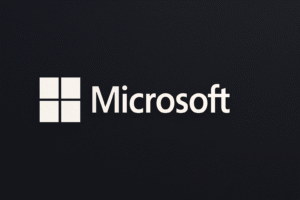Organizing finances digitally is more essential than ever as technology continues to evolve and influence everyday financial management. A report from the International Data Corporation estimates that the global digital transformation market will reach $2.3 trillion by 2023, paving the way for new solutions and strategies to improve financial transparency and streamline budgeting processes. As consumers seek to reduce their environmental impact alongside their expenses, transitioning to a paperless financial system holds significant promise.
Benefits of Going Paperless
The benefits of a digital-first approach to finance are manifold. Firstly, it reduces clutter and saves valuable space typically occupied by stacks of bills, statements, and paperwork. Secondly, organizing finances digitally enhances accessibility; individuals can manage their financial portfolios anywhere and anytime, significantly increasing the efficiency of day-to-day transactions. According to the U.S. Environmental Protection Agency, reducing paper usage also helps lower carbon footprints, aligning with a growing trend toward sustainability.
Furthermore, digital finance tools offer robust security measures. Blockchain technology, end-to-end encryption, and two-factor authentication make it easier to maintain control over one’s sensitive financial data. As reported by cybersecurity firm Cybersecurity Ventures, cybercrime could cost individuals and businesses up to $6 trillion globally by 2021, highlighting the importance of adopting secure financial solutions.
Market Impact
As the shift to a paperless financial ecosystem accelerates, the market for digital financial services is witnessing substantial growth. Financial technology (fintech) companies are responding to this demand with innovative applications and services designed to simplify personal and business finance. A recent survey by PwC found that nearly 70% of consumers are willing to share their financial data with third-party providers, provided that enhanced financial insights and improved user experiences are offered.
Investments in fintech sectors are also growing, with global fintech funding reaching $105 billion in 2021, according to CB Insights. This surge indicates a robust appetite for solutions that streamline financial management, particularly among younger generations who prefer user-friendly, mobile-driven platforms.
Expert Opinion
Experts believe that transitioning to a digital financial management system offers not only convenience but also critical insights into spending habits. “Harnessing technology to organize personal finances can lead to better decision-making and financial health,” explains Dr. Sarah Morgan, a financial analyst at Wealth Insights Group. “By utilizing tools such as budgeting apps and online banking services, users can easily track their income and spending while setting financial goals.”
Moreover, Morgan emphasizes the importance of integrating automated payment systems to avoid late fees and maintain credit scores. Digital services offer features that can automate monthly payments for bills, subscriptions, and even loan repayments, significantly reducing the stress involved with manual tracking.
Background
Historically, finance management was dominated by physical documents, which posed significant challenges for both individuals and small businesses. As digital technology became mainstream in the late 1990s and early 2000s, the introduction of online banking and budgeting applications began to revolutionize this space. The rise of smartphones further amplified these financial tools, putting powerful financial management capabilities in the hands of everyday consumers.
Key players include applications like Mint, YNAB (You Need A Budget), and QuickBooks, which have reshaped how financial data is analyzed and utilized. These platforms allow users to consolidate accounts, categorize expenses, and generate insightful reports that can inform future financial strategy.
What’s Next
Looking ahead, the financial landscape is poised for further transformation as artificial intelligence and machine learning technologies enhance the capabilities of digital finance applications. These advancements will allow for personalized financial advice and predictive analytics, enabling users to make more informed decisions with their money.
The transition to a paperless financial system will not only serve individual consumers but also small businesses seeking efficiency and transparency in their operations. As organizational efficiencies improve and consumer awareness grows, it is increasingly clear that digital finance is here to stay. Adopting a paperless system is no longer just a trend; it is becoming a necessity for those striving toward a more organized, sustainable, and secure financial future.







